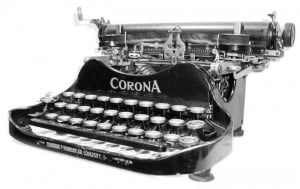To doublespace or not to doublespace
 You may have noticed that some people like to tap the space bar twice after finishing a sentence. Why do they do this?
You may have noticed that some people like to tap the space bar twice after finishing a sentence. Why do they do this?
The double space after a period habit comes from the days of typewriters. The problem with typewriters – besides error correcting, of course – was that due to technical limitations, the text was monospaced, also known as fixed-width or non-proportional. That is to say, unlike when you type on your computer, a character like the letter l or i takes up just as much horizontal space as a wider letter like a D or H. This made things look a little messy sometimes, due to there being a lot of white space between certain letter combinations, and not so much between others. Therefore it became a habit for typewriter users to insert two spaces after a period, to make sentence breaks a little clearer.
With the exception of certain monospaced fonts like Courier, modern day word processing has allowed for proportional fonts, which are easier to read and nicer looking. Since typewriters are never used these days, and since most people write with proportional fonts (with the exception of programmers and web designers, since computer code can be easier to parse when everything can be easily arranged in rows and columns), the double space habit has been phased out. However, there are still people who follow the old faithful – usually older than 30 – who insist that periods should be followed by two spaces, not one.
Don’t listen to them: it’s an archaic habit. Most modern word processors will automatically adjust the size of a space following a period to be slightly larger than the space between words anyway – some will even go so far as to correct a double space to a single space.
